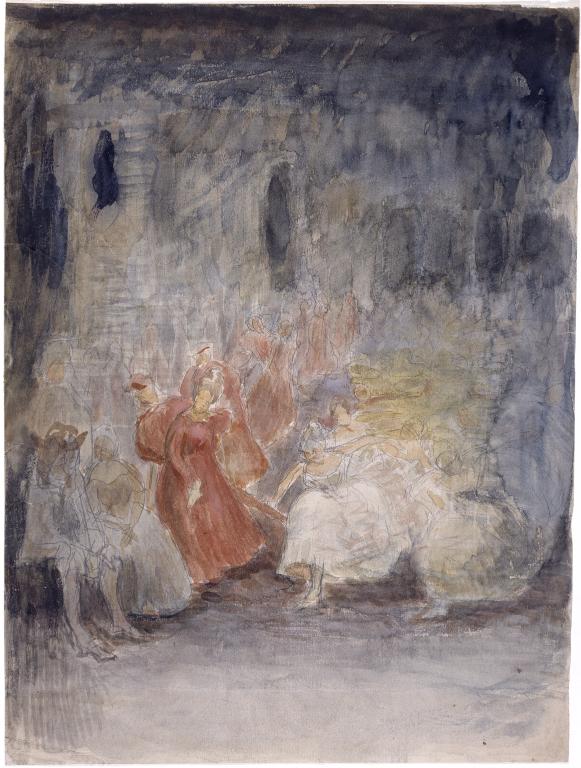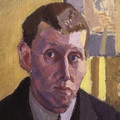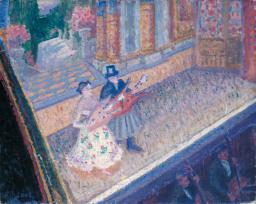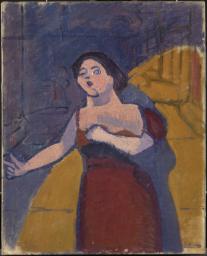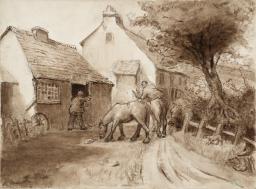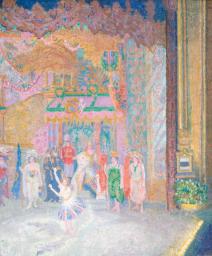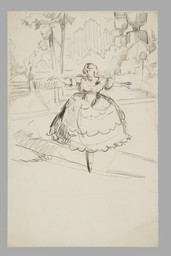Ballet Scene is executed with graphite and watercolour on cream wove paper which is medium weight and of good quality. All the edges are cut and there is a fold mark which runs horizontally across the sheet 36 mm from the bottom edge. It is not known when or why the paper was folded. Gore used both sketchbooks and loose sheets of paper and this support is more likely to be the latter. The sketch covers the full dimension of the paper. Drawing has been briskly applied with a sharp, soft pencil then painted over with watercolour washes, thinly applied in all but the darker areas at the top. The palette is limited to dark blue, brown, red and yellow, with dark blue used extensively in the background shadows. White has been mixed, in small amounts, with the red in the dresses to impart body. Colour is used to reinforce the sense of perspective and the dramatic character of the scene.
Gore seems to have been very interested in the properties of his materials and had clear ideas about how different media should best be used. Watercolour could enhance the drawing and help to ‘explain’ the subject but ‘should’ be used within certain technical parameters: ‘watercolour is a transparent stain and directly the transparency is lost the raison d’etre of the medium is lost. A man who can create anything in any medium is the man who realizes its possibilities and limits.’
1
Tomoko Kawamura and Sarah Morgan
June 2004
Notes
How to cite
Tomoko Kawamura and Sarah Morgan, 'Technique and Condition', June 2004, in Robert Upstone, ‘Ballet Scene c.1903–6 by Spencer Gore’, catalogue entry, May 2009, in Helena Bonett, Ysanne Holt, Jennifer Mundy (eds.), The Camden Town Group in Context, Tate Research Publication, May 2012, https://www.tate.org.uk/art/research-publications/camden-town-group/spencer-gore-ballet-scene-r1139022, accessed 29 March 2025.

